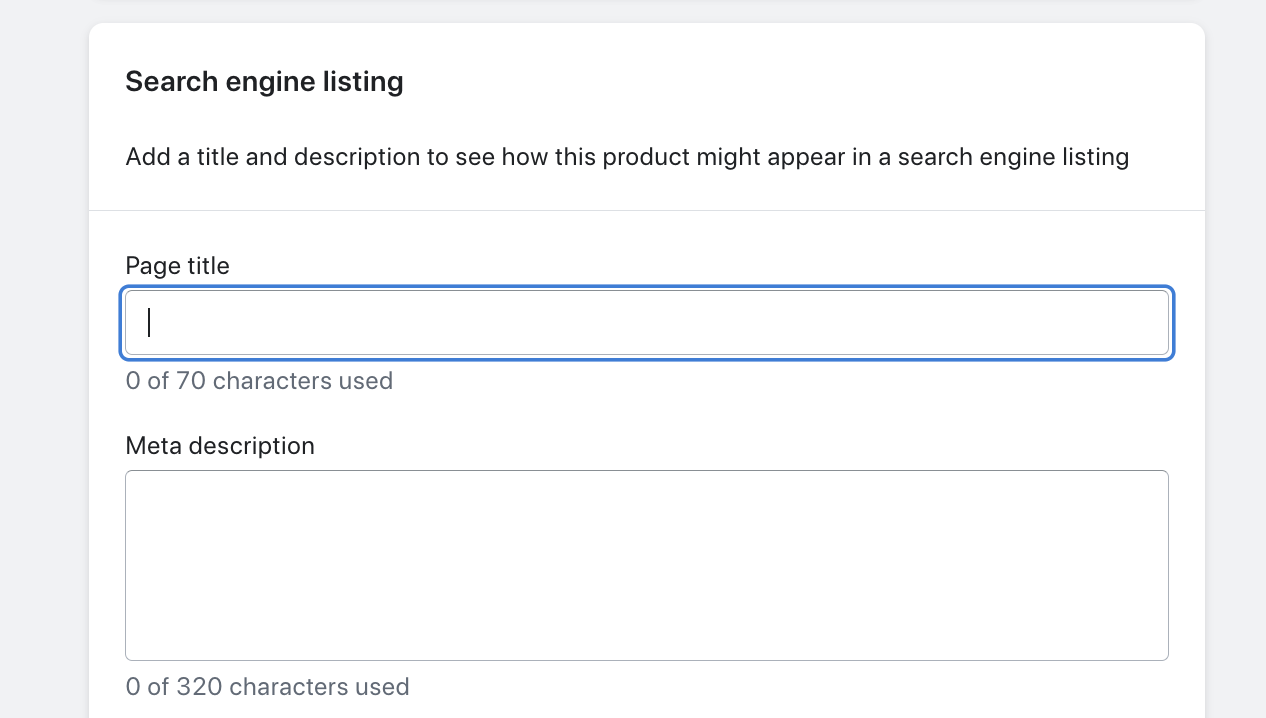Meta makeover: how to write copy that gets traffic
Sneak peak of a new SEO Shopify series!
Hi there! I’m working on a Complete Shopify SEO Checklist guide which is going up in installments on my website. The first part, on content, is live now. Below is an excerpt on writing meta titles and descriptions. Why do I want to highlight this section? Because your site’s meta copy is the type of low-hanging fruit that you really want to get right if you want to start seeing search results.
Read on for more, and if you find this useful, check out the rest of the guide. And, as always, if you have any questions, hit reply and reach out!
Meta titles and descriptions are short pieces of copy that you can assign to each page of your website, which then guide how the page will be displayed in Google search results. Here’s an example of where meta copy populates in Google:
Writing meta titles + descriptions
The goal of your site’s meta titles and descriptions is to be as descriptive and concise as possible. Google puts character limits on both of these pieces of copy to ensure that they’ll fit in each search result, which is why brevity is a virtue here.
Here are your character counts to live by:
Meta titles: max 55 characters
Meta descriptions: max 155 characters
*Note that these character counts are not hard-and-fast rules - you’ll see in Shopify’s settings that they allow you to enter far longer descriptions, for example - but know this: the further you go past Google’s recommended character counts, the more likely they are to scrap your meta copy and choose different text from the page to display in search results. That’s why you’ll sometimes see super-random, or cut-off, copy in some of Google’s search results, like so:
If you don’t designate length-appropriate meta titles and descriptions, Google can (and will!) go rogue and use any copy they want from the given page. Don’t let that happen to you!
Got it? Good. There’s no “right” way or formula to write meta titles and descriptions, but here are a few tips to note:
Meta titles should be broken into a “Page Title” | “Brand Name” format to give users clarity on both what page AND what site they’re clicking into.
Here’s an example of what I mean: if you’re Reformation, you’re going to want to title your main Bridal page something like “Bridal Salon | Reformation”.
Meta title and description copy should use universally understood language, NOT brand-specific terms.
Remember, you’re writing this copy for people who haven’t discovered your site yet. Existing Glossier customers might be familiar with the phrase “Balm Dotcom,” but people unfamiliar with the brand are likely to be searching for just “Lip Balm.”
And on that note - make sure your product type is clearly included in every product page’s meta title.
Here’s an example from a luxury clutch brand I worked with: every clutch style had a different women’s name, but nowhere on the actual product page was the word “clutch” ever used - including in the page titles! This resulted in pages with meta titles like “Maya Red Gloss,” which sounds lovely but didn’t actually tell Google - or shoppers - what the product is. It’s really easy to get so caught up in your own brand story (and terminology) that you forget customers still need to find you somehow - and any shopper searching for high-end red clutches on Google would never find these products.
Have a critical piece of info that may make users click? Include it in your meta descriptions.
Because you have a few more characters to work with in the meta description, it’s a great spot to include any relevant info (or keywords!) that you think users may be looking for. For example, A’Court - a new brand founded by Rebecca Taylor - includes her name in their homepage’s meta description, since she’s a person of interest in the fashion world:
Updating meta titles + descriptions in Shopify
Updating meta titles and descriptions is super-simple in the Shopify backend, but the process does depend on the page type:
Homepage:
Navigate from Shopify Admin to Online Store → Preferences
Update the page’s meta copy in the top “Title and Meta Description” section
Click “Save”
Product pages:
Navigate from Shopify Admin to Products, select the product you’d like to update
Scroll down to the bottom of the page to the “Search Engine Listing” section, click “Edit,” and add meta copy accordingly
Click “Save”
All other pages:
Navigate from Shopify Admin to Online Store → Pages, select the Page you’d like to update
Scroll down to the bottom of the page to the “Search Engine Listing Preview” section, click “Edit,” and add meta copy accordingly
Click “Save”
*Remember: Shopify’s character suggestions do not match Google’s - keep your page titles to ~55 characters and descriptions to ~155 characters, or you’re risking them getting cut off/replaced with another piece of page copy!
P.S. -
Have a question? Smash that reply button and reach out! I’m here to help. I also LOVE addressing brand owner’s pain points in this newsletter, if you feel inclined to share with me :)
Interested in working together on a Shopify e-comm, SEO or email marketing project? Get in touch with me here.
Book a Power Hour Consult with me and I’ll help you design a tangible plan to move your business out of an SEO, e-comm, or marketing rut.




